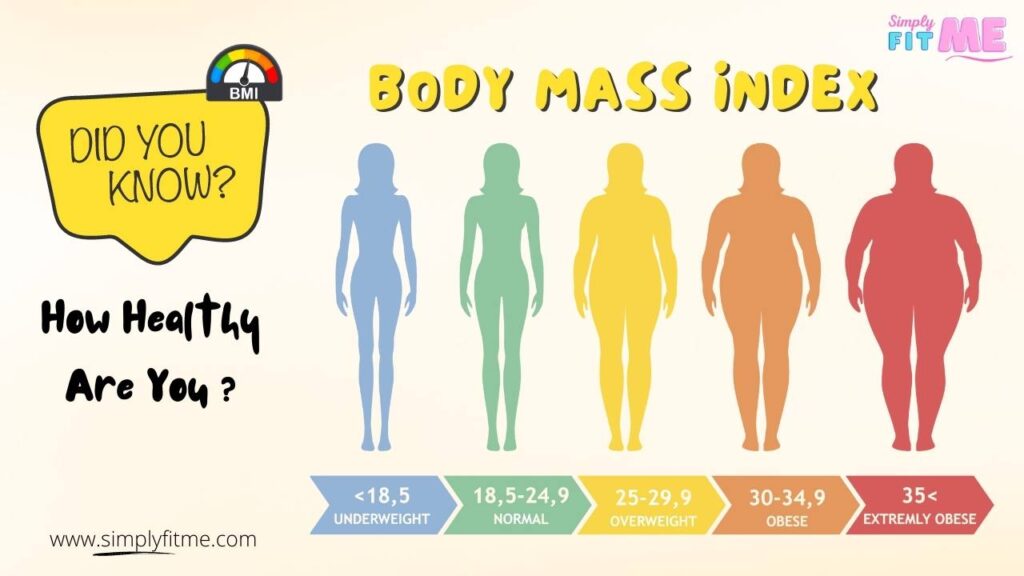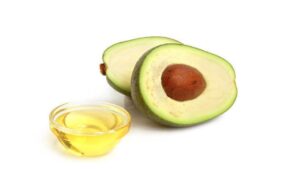BMI is a tool to track obesity and is used by researchers for population. It’s a simple index used for weight for height and is commonly helpful in classifying overweight, underweight, and obese individuals. Even doctors and health care professionals use it to access the health of people. It has limitations for different groups of people. Staying within the normal range of BMI for women helps to keep diseases away and a person is considered more fit. Let’s discuss the various factors of BMI in today’s article. Also Know Full Body Analysis Calculator
Is BMI a good health indicator?
BMI has developed 180 years ago. It was developed by Adolphe Quetelet who was a Belgian astronomer. However, it did not gain much popularity. An epidemiologist named Ancel Keys found it an effective tool to track body fat proportions for the population. Body fat can be estimated with help of the height and weight of a person. Know also Body Fat Calculator
How to calculate BMI
The center for Diseases Control and Prevention defines BMI as a person’s weight in kilograms divided by the square of height in meters (kg/m2).
BMI ranges for women
In order to find out whether the person is obese, underweight, or overweight, it’s important to fall under the standard categories recommended by the National Heart, Lung, and Blood institute.
| BMI | Weight standard |
| Below 18.5 | Underweight |
| 18.5 – 24.9 | Normal weight |
| 25.0-29.9 | Overweight |
| 30.0 and higher | Obese |
Normal BMI Calculator For a Woman
Is the BMI chart the same for all women?

A BMI chart can be helpful but doctors use different cut-off points depending upon the person’s ethnicity, muscularity, and other factors too.
1. White, black, and Hispanic women
One thing we must note down that even if two women have the same BMI, they have different regional body fat distribution and muscle mass. White, black, and Hispanic women are considered to be “healthy weight” because their BMI lies between 18.5 to 24.9. let’s understand it with help of an example: According to Centres for Diseases Control and Prevention, a woman who is 1.65 meters tall falls within normal BMI if she weighs between 50 to 68 kgs.
Different women have different body shapes and compositions. The body fat distribution in Mexican women is different from white or black. One review found that Mexican American women have 3 to 5% of body fat and larger waist circumference when compared with white or black women and have similar BMIs as well. Moreover, black women have higher muscle mass than white Mexican women. Mexican women have more body mass in the abdominal area. Each and every person is different in their own way. Read also 21 weight loss tips that works perfectly
2. Asian and South Asian women
According to research Asian and South Asian populations have more body fat than their body weight. This is linked to the occurrence of Type 2 diabetes at lower BMI levels. As Asians and South Asians have a BMI of 23 to 27.5 which falls under the overweight category and this is considered to be obese as their BMI is over 27.5. due to this reason, different cut-offs have been suggested for the Asian population.
3. Bodybuilders and Athletes
In bodybuilders and Athletes, the amount of body fat is less and have significant amounts of muscle mass in their bodies. BMI classifies them as overweight and obese. This showcases that BMI doesn’t differentiate between muscle mass and fat mass so people should not use BMI as a measurement of body composition.
4. Postmenopausal women
As women age, their muscle mass gets lower and more fat deposition takes place in the lower abdominal areas. This is due to a lack of physical activity and changes in hormonal levels. Even though the BMI of older women remains the same as that of younger women still they have fewer muscle mass and more body fat. When a study was conducted on this age group in 2016 it was found that BMI cut off at 30 was not an accurate indicator of obesity in this group. So it cannot be used to indicate obesity in post-menopausal women.
Pregnant women’s weight gain recommendations as per BMI
Weight gain during pregnancy is quite common as it shows the weight of the fetus too. Weight gain is known as pre-pregnancy weight. Here are the guidelines given by the Medical institute for weight gain. Read also 31 Proven Ways To Lose Weight Without Exercise
| Pre-pregnancy BMI | Total recommended weight gain | Mean rate of weight gain in the second and third trimester |
| Underweight (under 18.5) | 28-40 ponds; (12.5 -18 kgs) | 1 pound (0.51 kg) per week |
| Normal weight (18.5 -24.9) | 25 -35 pounds; (11.5 -16 kgs) | 1 pound (0.42 kgs per week) |
| Overweight (25.0- 29.9) | 15-25 ponds (7- 11.5 kgs) | 0.6 pounds(0.28 kg per week) |
| Obesity (30 or greater) | 11-20 pounds (5-9 kgs) | 0.5 pounds (0.22 kg per week) |
No doubt these recommendations are helpful in providing information, but it’s good to work with health care providers. Specific information is provided by them which can ease and improve overall health.
Benefits of BMI
BMI is an easy and inexpensive measuring tool to understand whether persons fall under the overweight or underweight category. Weight moderation can also be achieved and at-risk diseases can be identified easily such as
- Diabetes
- Osteoarthritis
- Cardiovascular diseases
- Stroke
- And some forms of cancer too
It’s one of the easiest, most effective, and cheapest options which are extremely important for medical research. A higher BMI shows higher levels of fat in the body which helps to determine diseases and rate of mortality in individuals. Underweight people will be at risk for early death and developing new sorts of diseases. It’s better to get monitored BMI with help of health care providers as they can provide better information. Try assessing by yourself.
BMI Issues While Knowing One’s Health Condition
The use of BMI to mark health can be a problem due to various reasons. Although health professionals estimate body fat with help of BMI, the actual body fat or lean body mass is not taken into account. This clearly shows that BMI doesn’t recognize muscle and fat. Muscle is denser than fat tissue. Because of such an issue, even if a person has higher muscle mass it’s regarded as obese or overweight even though its body fat levels are low. People who have higher levels of muscle mass and a higher BMI have a low risk of mortality when compared with those who have higher BMI and lower muscle mass. Read also Foods That Causes Obesity or Weight Gain
Another important issue we can go through is, that BMI doesn’t show where fat is located in the body. So fat distribution in different sexes or bodies is not taken into account. Apart from this declination in muscle mass due to age is also not considered.
Even if a person has good amounts of belly fat that person falls under the range of healthy BMI. However, belly fat can be a significant factor in developing chronic diseases. So, a healthy BMI person can have an increased risk of mortality and other surgical complications. Experts consider BMI as a very simple tool to access the health condition of people.
The proportions of muscle fat and bone in the body typically changes as a person age down. Women aged between 25 and 65 on a rough basis loses about 13 pounds of muscle and bone mass. Even belly fat increases by about 4 times. In such cases, BMI calculators can be inaccurate, especially for post-menopausal women who have a higher body fat percentage but displays moderate BMI. Read also: 31 Proven Ways To Lose Weight Without Exercise
Other methods of weight measurement
Apart from BMI other methods are present that help to understand weight, body composition, and even risk for certain diseases.
1. Waist circumference
Waist circumference is used for measuring belly fat. Belly fat is an indicator of weight-related issues when some person is at risk. A soft tape is used to measure the circumference of the waist. In a Cameroonian population study, it was found that waist circumference predicts the screening of diabetes. Read Also How To Lose Belly Fat Naturally
2. Waist to hip ratio (WHR)
Waist to hip ratio is a strong method for measuring abdominal fat which predicts future risks too. According to some researchers when separate figures are taken for waist to hip ratio a better assessment of health risk can be obtained. Read also
Its usually calculated by diving the waist measurement by the circumference of a person’s hips. According to World Health Organization (WHO), a WHR value of 0.85 or below for women shows that they have a low risk for weight-related diseases.
Diagnostic methods
1. DEXA
It stands for Dual-energy X-ray absorptiometry. It’s an accurate way to measure total body fat and muscle mass along with the bone mass. It’s done as such when X-rays move through fat, muscle, and bone of the person’s body at different rates. Low levels of X-rays are passed through the body in order to find out the relative percentages. Health care providers provide better advice if some person is interested in a DEXA scan. Read also: 7 Days Fruit Diet Plan For Weight Loss
2. Skin fold calipers
This method is another easy way to measure body fat. It’s a little uncomfortable upon practice and requires training before taking accurate measurements. In this method, the doctor folds the skin in pinch form and then measures its thickness. Its carried at various sites of the body. Read also Simply Fit Me Fat To Fit Challenge, 17 Days
3. Densitometry
A doctor is involved in this method where a person’s body weight is measured when he is in water. In order to calculate body fat percentages, weight measurements on land to weight measurements in water are taken. The densitometry method generally takes place in research settings.
4. Bioelectrical impedance (BIA)
In this method, a low electric method current is passed through the body in order to estimate a person’s body fat percentage.
5. Isotope dilution
This is a test in which a person is made to drink water that contains isotopes and the samples are taken for body fluids. Then its sent to the doctor and information is provided on the person’s body composition.
BMI is an outdated measurement of overall health. Different physical variables such as muscle mass, age, and menopausal status of women, BMI doesn’t take into account. Its also a tool that is used for determining the health risk of personal conditions such as diabetes, heart disease, and stroke. BMI doesn’t provide information on body fat in a specific way. On the other hand body fat percentage, bone density, and muscle mass change over a period of time. So, this way accurate measurements cannot be provided.
The information provided here is for general purpose only. Its not recommended by experts. For more health and fitness related queries check our Instagram page @beautifulyoufit.
A healthy BMI falls between 18.5 to 24.9. A BMI chart can be referred to in order to get information on different ranges of BMI.
Different bodies have different compositions. For some people, body fat may be more and muscle mass is less. On other hand, some people have more muscle mass and less body fat. This way muscle mass makes up all the weight of the person. However, those who have higher muscle mass and less body fat need not worry about their health risks and obesity-related problems.
This can happen when you get involved in a lot of physical activity. Try reducing your calorie level on a daily basis so your BMI is lowered. If a person maintains a healthy weight then BMI is lowered automatically. The calorie deficit can be created when aerobic exercises and other forms of cardio workouts are taken into account. Following a proper diet with a workout creates a calorie deficit which helps in weight loss. Also, try cutting down salt from your diet in order to reduce water weight which helps in faster weight loss.
Belly fat-burning foods include beans, broccoli, apple cider vinegar, chicken breasts, and grilled fish with olive oil. In order to burn belly fat it’s recommended to take 10,000 steps on a daily basis. Along with it take balanced meals which are light. Apart from 10,000 steps, go for planks and mountain climbing sort of exercise in order to reduce belly fat.







